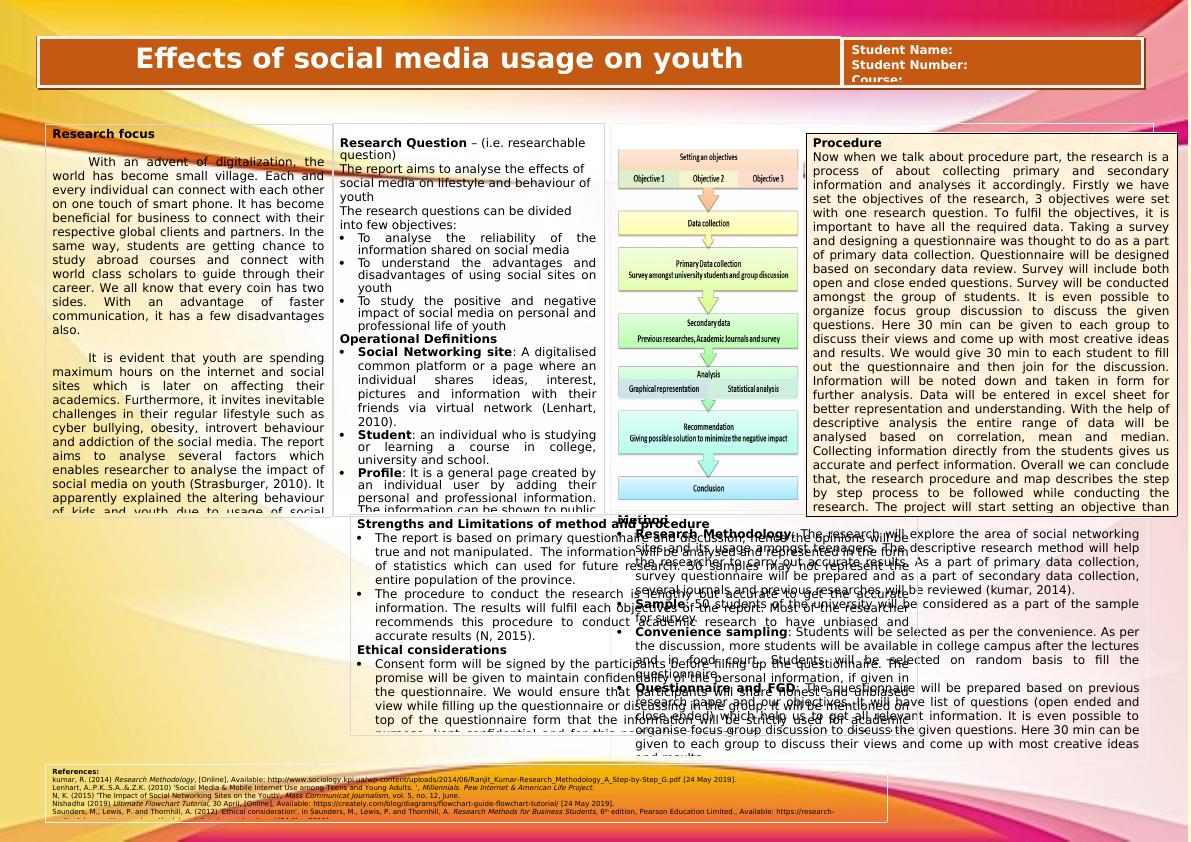Effects of Social Media Usage on Youth
This assignment requires students to create an academic poster summarizing their research topic of interest.
1 Pages1339 Words499 Views
Added on 2022-11-11
About This Document
This report analyses the effects of social media on lifestyle and behaviour of youth. It explains the positive and negative impact of social media on personal and professional life of youth. The report aims to analyse several factors which enables researcher to analyse the impact of social media on youth. It apparently explained the altering behaviour of kids and youth due to usage of social media extensively.
Effects of Social Media Usage on Youth
This assignment requires students to create an academic poster summarizing their research topic of interest.
Added on 2022-11-11
ShareRelated Documents
End of preview
Want to access all the pages? Upload your documents or become a member.
Effects of Social Media Usage on Youth: Advantages and Disadvantages
|1
|1314
|229
Social Media and Its Impact Upon Young People in London
|38
|8047
|66
Impact of Social Media on Youth Behaviour Change: A Case Study of University of Melbourne Students
|7
|1748
|59
Social Networking Effect on the Emirati Youth’s Behavior
|35
|9161
|133
Benefits and Costs of Social Media
|6
|1275
|71
Social Media's Influence on Teenagers' Self-Identity
|9
|2841
|340

